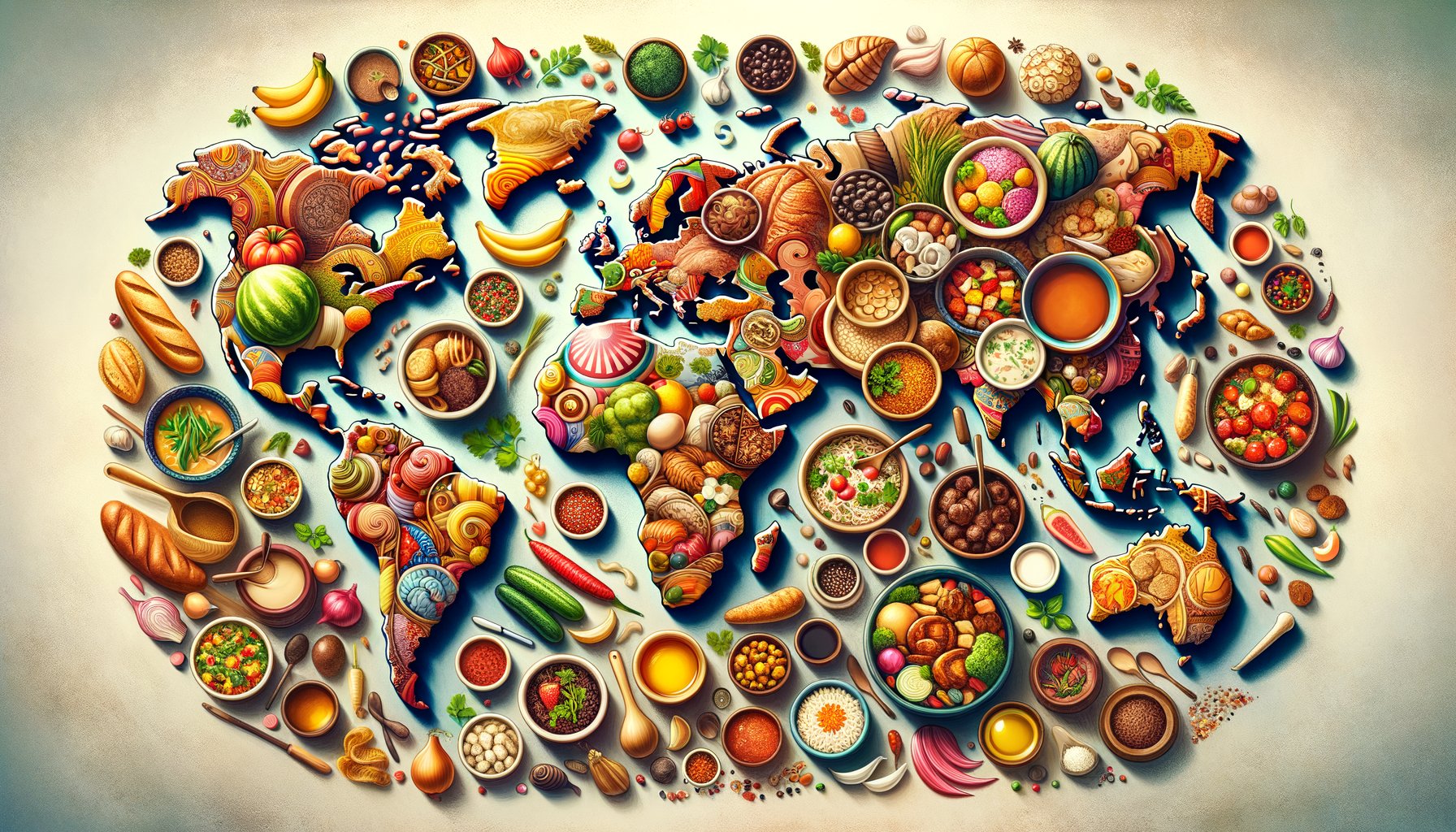Physical Address
304 North Cardinal St.
Dorchester Center, MA 02124
Physical Address
304 North Cardinal St.
Dorchester Center, MA 02124

G’day, fellow Gen Z’s! Sophie here. Today, we are embarking on a culinary journey around the world. No need to pack your bags or worry about long-haul flights; we’re exploring global cuisine from the comfort of our own homes (or wherever you happen to be scrolling through Illusions of Wisdom right now). So, grab your virtual passport as we dive into cultural diets and their health benefits.
First stop: The Mediterranean. Picture this: you’re sitting in a quaint café in Santorini, sipping on a glass of red wine while enjoying a plate of fresh salad drizzled with olive oil. Sounds divine, doesn’t it? This isn’t just food for the soul; it’s also incredibly beneficial for your body.
The Mediterranean diet is rich in fruits, vegetables, whole grains, legumes and olive oil. It includes moderate amounts of fish and poultry and limits red meat. Fun fact about me – I tried going vegetarian once but ended up dreaming about bacon sandwiches every night for a week. But I digress.
Research has shown that this diet can help reduce heart disease risk and maintain healthy weight levels. Plus, it promotes longevity and prevents chronic diseases. If that’s not enough reason to incorporate some Greek salad into your life, I don’t know what is!
Next up is Japan – home to sushi rolls, ramen bowls and the longest-living people in the world! Coincidence? I think not.
The traditional Japanese diet consists mainly of fish, seaweed, vegetables and fermented foods like miso soup which are all low in fat but high in essential nutrients. Tea, particularly green tea, is also a staple. This diet is believed to contribute to lower rates of obesity and longer lifespans in Japan.
Personally, I’ve always been a fan of sushi. There’s something about the combination of fresh fish, tangy rice and soy sauce that just hits the spot. Plus, it’s fun to eat! Just remember not to rub your chopsticks together; it’s considered rude in Japan.
Last but not least, we’re heading towards Northern Europe for the Nordic diet. Think: cold-water fish like salmon and herring, root vegetables, whole grains and berries.
Similar to the Mediterranean diet in its emphasis on whole foods and healthy fats, the Nordic diet has been associated with lower blood pressure and weight loss. Now if only I could convince my taste buds that pickled herring is as delicious as a juicy burger…
Taking inspiration from different cultural diets isn’t just about improving our physical health; it’s also an opportunity to broaden our culinary horizons and appreciate other cultures. So why not try out some recipes from around the world? You might discover new flavours you love!
Remember though, while these diets offer numerous health benefits, they are part of a lifestyle that includes regular exercise and overall balance. Don’t stress yourself trying to strictly adhere to any one diet. The key is variety and moderation (yes mum, I’m finally taking your advice).
So go ahead – spice up your meals with some international flair! Try making homemade sushi or roast some veggies with olive oil for a Mediterranean touch. And if you find yourself craving a bacon sandwich (like yours truly), don’t beat yourself up over it.
In this gastronomic journey around the world, the destination isn’t just better health, but also a richer appreciation for our global community. So, let’s eat our way to better health and a more diverse palate!